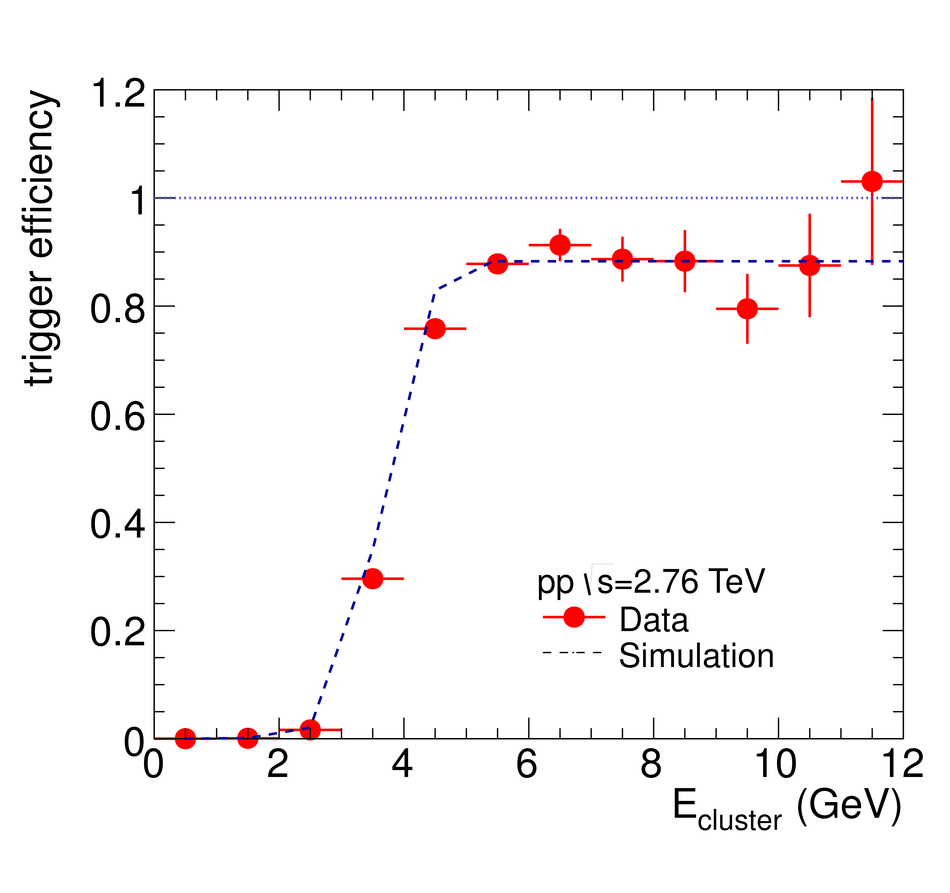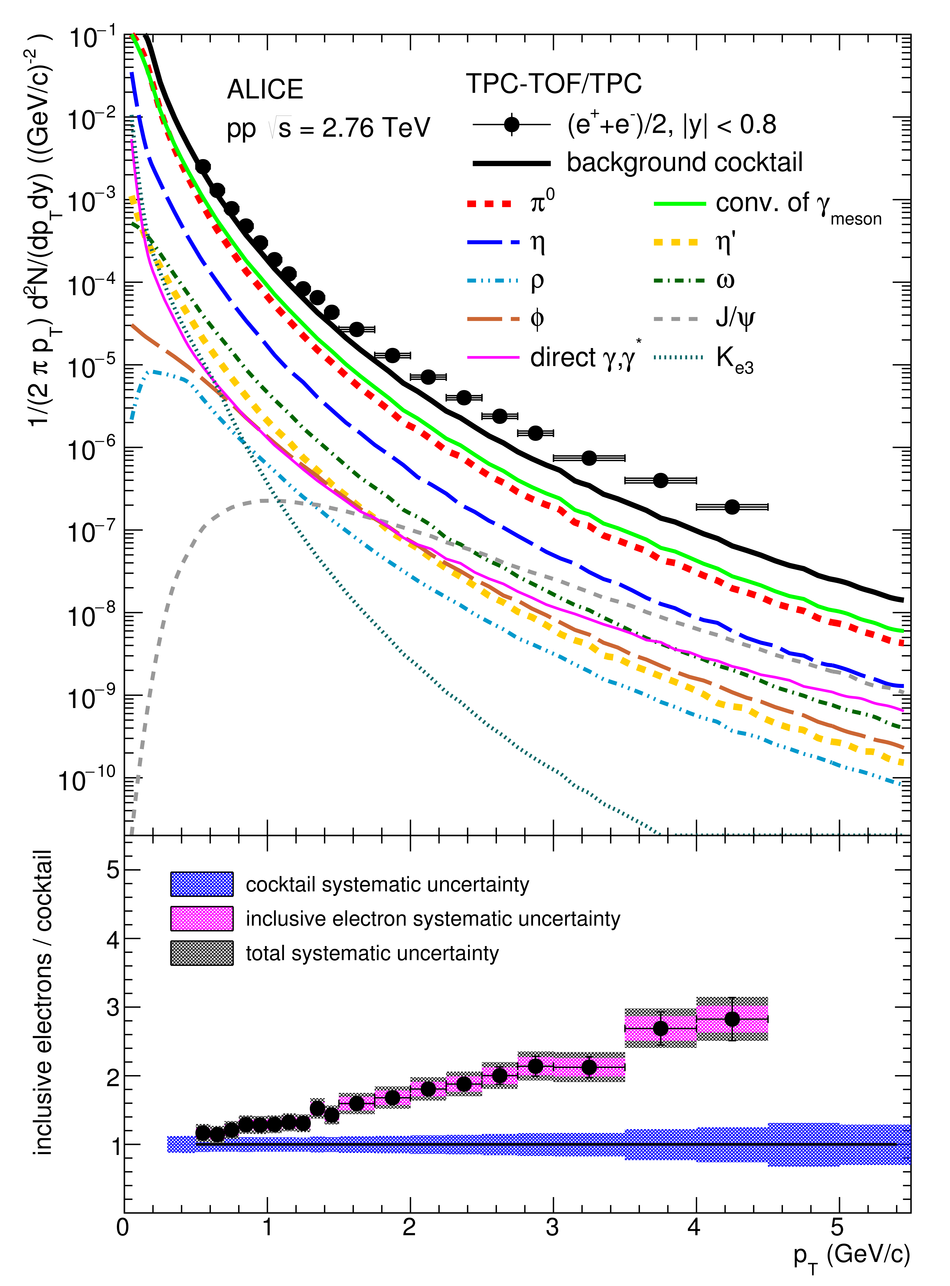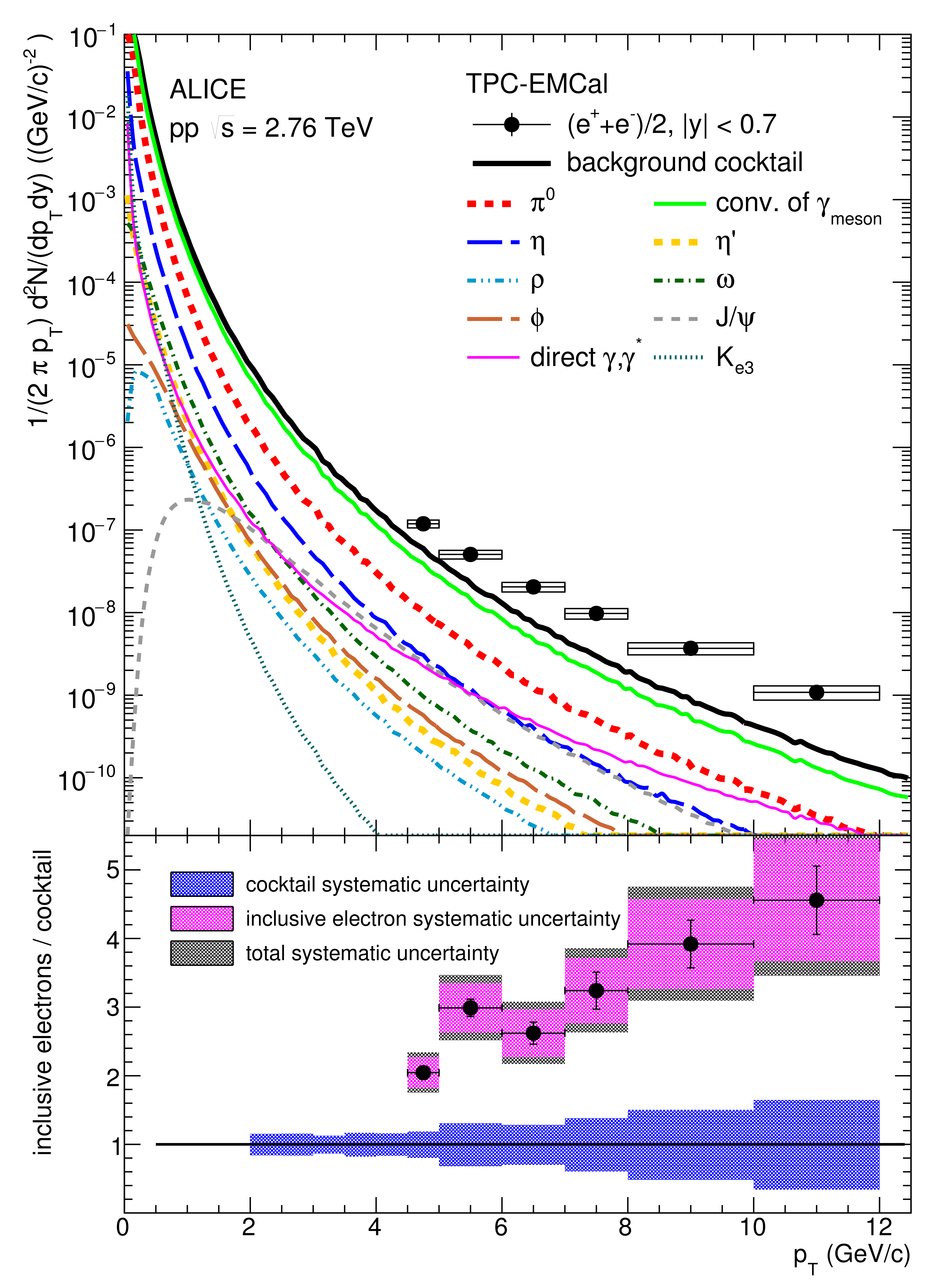The $p_{\rm T}$-differential production cross section of electrons from semileptonic decays of heavy-flavor hadrons has been measured at mid-rapidity in proton-proton collisions at $\sqrt{s} = 2.76$ TeV in the transverse momentum range 0.5 < $p_{\rm T}$ < 12 GeV/$c$ with the ALICE detector at the LHC. The analysis was performed using minimum bias events and events triggered by the electromagnetic calorimeter. Predictions from perturbative QCD calculations agree with the data within the theoretical and experimental uncertainties.
Phys. Rev. D 91 (2015) 012001
HEP Data
e-Print: arXiv:1405.4117 | PDF | inSPIRE
CERN-PH-EP-2014-097




